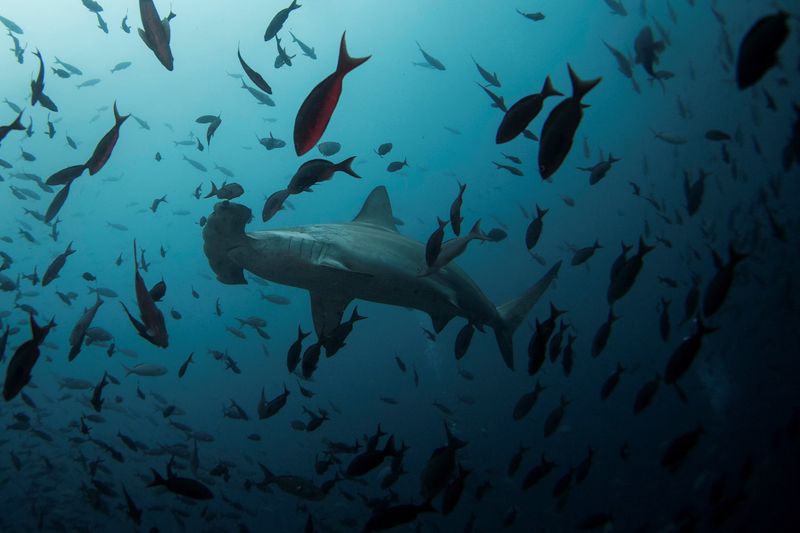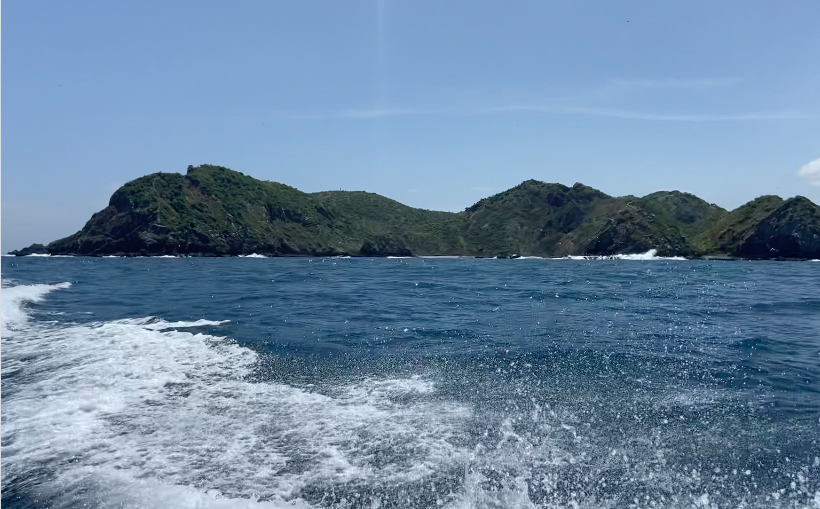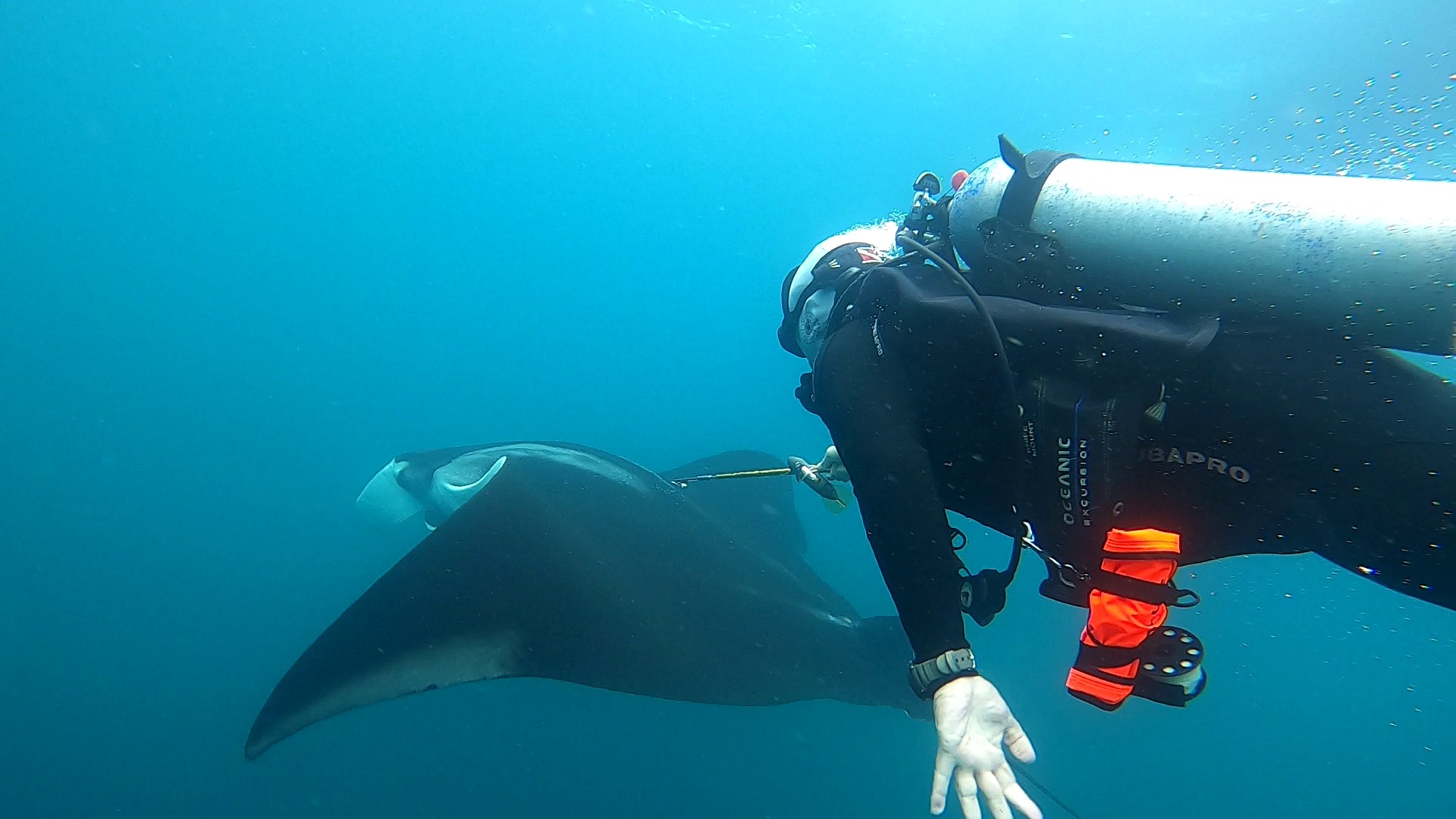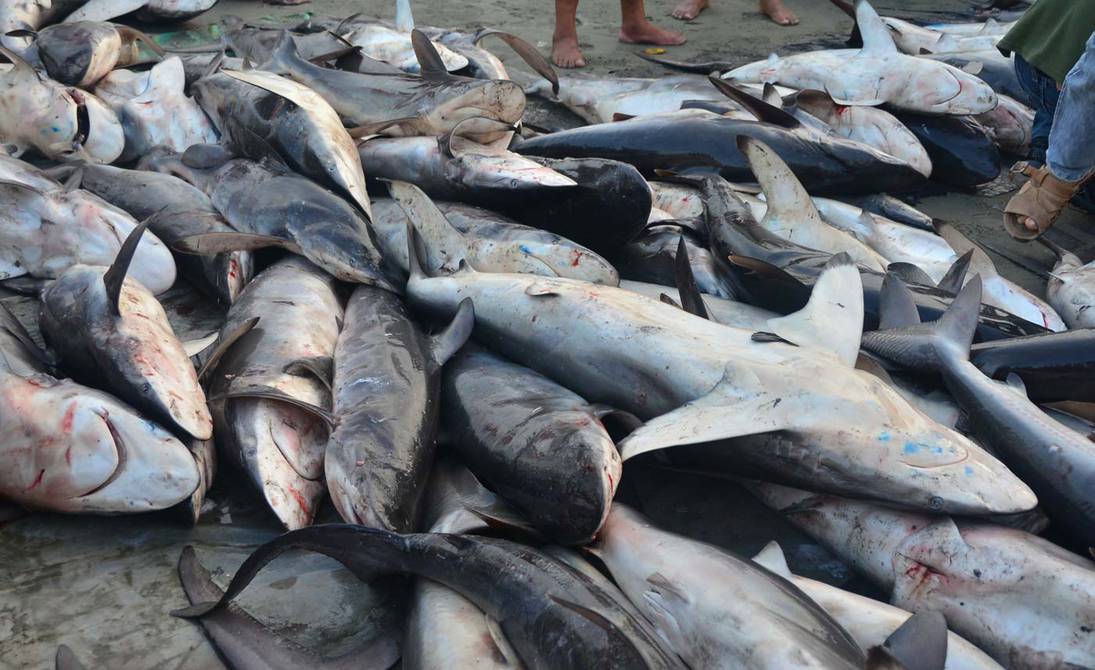Ecuador It is a megadiverse country. Its waters are the habitat and destination of several species of sharks and stripes. Despite the fact that there are marine reserves, fishing bans and despite the fact that the country is a signatory to several international conservation instruments, the reality of these animals, which are among the most threatened in the world, is different. Both sharks and rays still fall into fishing nets and, although they should be returned to the sea, the meat and other parts of these animals end up being sold or trafficked illegally.
The scientists Nathan Pacoureau and Nicholas K Dulvyin the study of the World Wide Fund for Nature (WWF) living planet published in 2022, have highlighted that “thearks and rays are important to the health of our oceansbut each time they are commercially valued for their meat, their supposed medical properties or their use in cooking”.
According to the latest study by the International Union for Conservation of Nature (IUCN), the Species Survival Commission (SSC) and the Group of Shark Specialists, seven sharks have been detected in Ecuador. Important Areas for Sharks and Rays (ISRA). ISRAs are “discrete parts of three-dimensional habitats, which are important to one or more shark and ray species, and which have the potential to be delineated and managed for conservation purposes”.

For its part, the Ecuadorian government currently has nine marine reserves: Galera San Francisco, Santa Clara Island, Bajo Copé, Galapagos, Hermandad, Cantagallo-Machalilla, El Pelado, Puerto Cabuyal – Punta San Clemente, Hermandad and the first eight coastal marine miles of continental Ecuador.
A report from WWF determined that Ecuador is home to the world’s largest population of oceanic manta rays. The study that allowed us to know about this lasted 14 years and identified that more than 2,800 individuals of the species of rays Mobula birostris periodically visit the coast of Ecuador, becoming the place with the largest aggregate of Oceanic manta rays in the world. According to statistical models and predictions, it is estimated that this number could reach more than 22,000 individuals: “In addition to being impressive, they are important bio-indicators of the health of our oceans,” the organization said.
The largest number of individuals were photographed in Silver Island, Machalilla National Park, Manabí province. In that park is the marine reserve Cantagallo-Machalilla. However, a report from Mongabay Latamrevealed that, between November 2020 and March 2022, in the province of Manabí there were 78 alerts for unauthorized fishing activities within the first eight miles, which were executed by 16 industrial vessels: “Of the 78 alerts specified in In the reports, 46 had coordinates and by locating them on a map we verified that 44 of them occurred within the Cantagallo-Machalilla Marine Reserve”.

Although the Cantagallo – Machalilla Marine Reserve was created in 2015 to protect more than 300 species of mammals, birds, amphibians and reptiles that inhabit the area; does not yet have a management plan. The draft of that plan, which would regulate and sanction illegal activities within the area, awaits the approval of the authorities, since 2019.
In Ecuador, since 2010 the fishing and commercialization of manta rays has been prohibited. Last year, the Ecuadorian Navy seized 600 kilograms of Manta Ray “wings”. The portal Environmental Log has published that “in the Machalilla National Park on the coast of Ecuador, captures of rays and manta rays are observed.” Even the specialized environmental media has reported that in the towns of northern Peru there are restaurants that sell “Tortilla de raya” and a traditional dish called “chiringuito” made with the meat of manta rays.
The WWF has warned that about 60% of the manta rays observed in Ecuador have damage caused by human activities: “most cases due to encounters with fishing gear such as nets, hooks, nylon, among other elements.”

Paul Guerrero, director of Conservation of Marine Landscapes of WWF-Ecuador, has referred to the need to preserve manta rays and has declared that the country is a strategic area for their conservation: “In addition to human threats, the very biology of the manta rays make them vulnerable. Like their close relatives, sharks, they are slow growing, late in sexual maturity, and have very few young. Ecuador is a strategic site To ensure their conservation, this important study published by the Mantas Ecuador Project confirms the need to adopt measures to ensure the protection of these harmless and kind giants”.
Although sharks have been portrayed as fearsome animals, the reality is that in almost 90 years, South America has registered 129 shark attacks, 12 of them in Ecuador, according to the International Shark Attack File of the University of Florida. These fish are indispensable in the oceanic ecosystem, however, more than a third of sharks are threatened with extinction. Despite this, less than 5% of shark species are included in international treaties that seek conservation.
Of the 400 species of sharks that exist in the world, 38 are caught in Ecuadorian waters, despite the fact that directed shark fishing is prohibited in Ecuador. In 2007 the State established, through a decree, that the meat and fins of these fish can only be marketed when they are caught incidentally —when they are caught by accident during operations to catch other fish such as tuna, for example.

Despite this ban, sharks continue to be caught by fishermen, even unique specimens such as the whale shark. Just the last week of this month, videos of whale sharks caught by fishing boats. One of the whale sharks died because a fisherman left it on the beach. This species of shark is characterized by its large size, as they can measure 13 meters in length, the equivalent of a school bus.
Although it is believed that most illegally caught sharks are sold abroad, especially to Asian countries like China where shark fin soup costs hundreds of dollars, an investigation by the San Francisco de Quito University determined that in the markets of the capital the shark is sold instead of croaker, billfish or tuna.
In 2021, Luis Alcívar, director of the Re-Emprende initiative of the Alliance for Entrepreneurship and Innovation (AEI), citing data from the WWF, assured that in 4,500 tons of shark meat are consumed in the country, of which 66% is consumed in the Sierra.
In March 2022, Infobae, GK and Mongabay Latam published a report on the increase in the export volume of shark fins from protected species. The journalistic investigation revealed thatn 2020, 82.18 tons of shark fins were exported for a value of 2.9 million dollars and in the first nine months of 2021, the figure tripled and 223 tons were exported for a value of 6.5 million dollars.
But the most paradoxical thing about these last exports of 2021 is that 78% of them —173.94 tons of fins, equivalent to more than 200,000 sharks— correspond to four species that are protected by the Convention on International Trade in Endangered Species of Wild Fauna and Flora (CITES).) that seeks to regulate the commercialization of certain species to ensure that they are conserved in nature.
Ecuador’s ban on targeted fishing for sharks and the exception of being able to market them if they are caught incidentally, has been in force for 15 years. The Ministry of Production, Foreign Trade, Investment and Fisheries of Ecuador only officially signed the Regulations of the Organic Law for the Development of Aquaculture and Fisheries on February 25, 2022. But the regulations do not establish the maximum percentage of shark fishing that can be considered incidental. It is urgent that this precision be established since experts assure that, under this excuse, thousands of sharks continue to be captured in Ecuador.
Keep reading:

